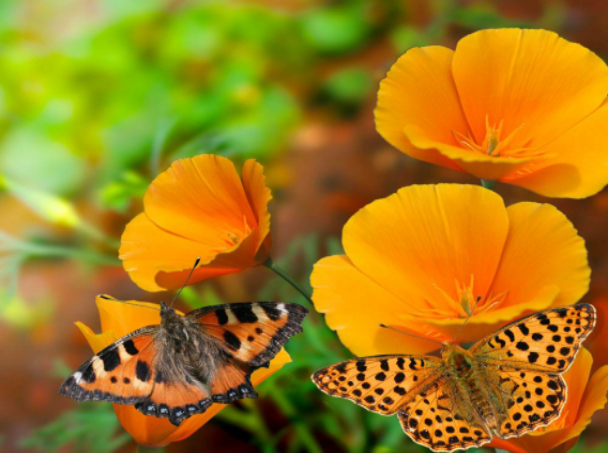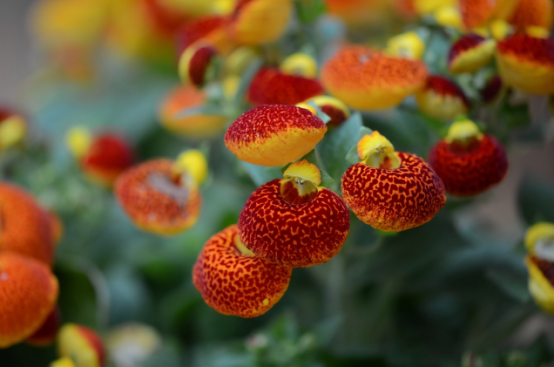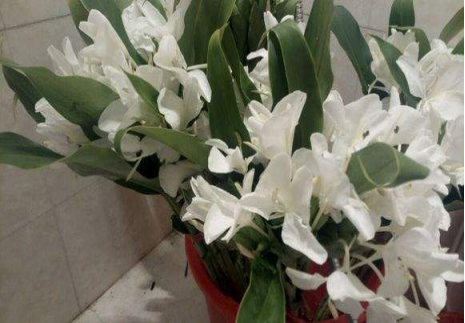The propagation method of butterfly flower
Sowing and reproduction
The sowing time varies according to the required florescence and regional climate characteristics. In areas with mild winter and cool summer, seeds can be sown all year round, blooming from June to September in spring, flowering in September and October in summer, flowering in December in autumn, and flowering in February and March next year in September and October. Flowers can bloom almost all the year round. Sowing is the best in autumn in September, with 700 seeds per gram. The suitable temperature for germination is 13 ℃ to 16 ℃. It will germinate 12-15 days after sowing, and it will take about 100-110 days from sowing to flowering.
Cuttage propagation
It is carried out from May to June and can be propagated by cuttage under this climatic condition. Cuttings in autumn, slightly protected after winter, blossom in early spring. Cut off the sprouting branches from the base of the plant, insert them into the peat, keep the air moist, and take root 15-20 days after insertion, the survival rate will be higher.

Ramet propagation
Ramet is often carried out after anthesis, and the new plant should have 23 stem buds and good fibrous roots. Cut off the new branches with roots that germinate in the place with adventitious roots or roots, and plant them directly in a pot and restore them in a semi-shady place. Sufficient sunshine is needed in winter.
In addition, it is worth mentioning that blue butterfly flowers not only have "external beauty", "inner beauty" is often talked about. Blue butterfly scented tea has a fragrant taste, unique color and luster, and has a special health care effect.
Culture method of butterfly flower soil
Butterfly flowers do not have high requirements for soil, any type of soil, as long as it is well drained, moisturizing and not easy to caking, it can be safely planted there.
The sandy loam has the best cultivation effect because of its high aeration and water permeability, which is beneficial to the expansion of the root system of butterfly flowers.
What if the selected plot of soil is clayey? Plant ash, perlite and coarse sand are applied on the surface of the soil and then ploughed and mixed evenly, and then planted.
If the sandiness of the soil is too strong, it is easy to leak too fast, the way to deal with it is to spread mulch such as rice husk, pine needle or peat on the surface of the soil after planting to alleviate the problem of excessive leakage.
Planting
When planting butterfly flowers, the soil temperature below 20 ℃ is the most appropriate. If the average temperature during the planting period is expected to exceed 23 ℃, it cannot be planted. At this time, the planting period must be advanced or postponed, otherwise, it will be very difficult for butterflies to survive.
Watering
Butterfly flowers like humid environment, so the soil should be kept moist during cultivation, if the soil is too dry, it will not be conducive to plant growth. Watering once before planting can ensure that the soil remains moist during planting and is conducive to rapid rooting. Water again after planting in order to bring the soil into full contact with the same kind of ball. Note that the watering time is best in the morning.
Fertilizer application
It is not advisable to apply base fertilizer according to the usual method before planting butterfly flowers, because it is very sensitive to soil salinity. If fertilized at this time, it will increase the salt content in the soil, which is not conducive to the hairy roots of butterfly flowers.
However, organic fertilizer can be applied, such as cow and horse manure or dried chicken manure, which should be mixed evenly with the cultivated soil. After the planting survives in spring, urea can be applied once in early summer, phosphorus and potassium fertilizer in early autumn, cow and horse manure in combination with frozen water at the end of autumn, and can also be sprinkled directly on the soil.
Weed
For plots where butterfly flowers are planted, weeding should be done well in advance. If there are weeds in the process of planting, they should be pulled out manually in time, and chemical herbicides should not be used to remove weeds, otherwise they will not be conducive to their growth.
The above is about the butterfly flower conservation precautions, although the butterfly flower cultivation process is a bit cumbersome, but it is worth your hard work, oh, do not believe you to look down!
Culture methods of butterfly flowers
Culture methods of butterfly flowers
Temperature requirement
The suitable temperature for cultivation is 25-28 ℃ in the daytime. It is also seen that the frontal temperature is 18-20 ℃, and the seedlings should be raised to about 23 ℃ at night. In this temperature environment, butterfly flowers grow almost all the year round, especially the seedlings grow rapidly, and the seedlings removed from the test tube can blossom in about 1-2 years.
Humidity requirement
The humidity of the original place of the butterfly flower is relatively high, so Aipei butterfly flower should create an environment with high air humidity. Generally speaking, humidity should be kept at 60-80% throughout the year. Since the climate is dry in spring, autumn and winter in the vast areas of the north, we must try to improve the air humidity of the cultivation environment. We can increase the humidity of the local environment by sprinkling water on the ground, platforms, walls, etc., several times a day, or a small amount of waterlogging on plant pages.
Lighting requirement
The cultivation of butterfly flowers should have a good shading condition when exposed to strong light. Although the leaves of butterfly flowers are too wide and thick, and abundant water is stored on them, the stratum corneum and drought-resistant structure on the leaf surface are relatively poor, so once they encounter direct sunlight, they lose more water, or are not replenished in time. Leaves are prone to sunburn.
Points for attention in Phalaenopsis Culture
In winter and spring in North China, it is often sunny and rainy, so proper sunshade is needed at this time.
When the summer sun is strong and the temperature is too high, the sunshade net or bamboo curtain should be covered outside the greenhouse glass to play the dual role of greenhouse cooling and sunshade, and the amount of shading should be more than 60%. You only need to cover about 40% in the fall.
- Prev

Maintenance and cultivation techniques of Pu Baobao at flowering stage
The main results are as follows: 1. the maintenance of Pu Baobao flower during flowering period is sensitive to water, and watering should be strictly controlled at full flowering stage. It is necessary to keep the basin soil moist during the culture period, but not too wet. Don't sprinkle on the leaves when watering. When the flowers grow into branches, it is necessary to keep the potted soil dry.
- Next

Cultivation method of Ginger Flower in Pot
1. Temperature ginger flower is a kind of subtropical plant, which likes high temperature and high humidity, so pot planting requires higher temperature. Generally speaking, the indoor temperature is above 10 degrees Celsius in winter. 2. Soil ginger flowers like water, but they should also have a soil with good drainage, otherwise they are easy to rot.
Related
- Fuxing push coffee new agricultural production and marketing class: lack of small-scale processing plants
- Jujube rice field leisure farm deep ploughing Yilan for five years to create a space for organic food and play
- Nongyu Farm-A trial of organic papaya for brave women with advanced technology
- Four points for attention in the prevention and control of diseases and insect pests of edible fungi
- How to add nutrient solution to Edible Fungi
- Is there any good way to control edible fungus mites?
- Open Inoculation Technology of Edible Fungi
- Is there any clever way to use fertilizer for edible fungus in winter?
- What agents are used to kill the pathogens of edible fungi in the mushroom shed?
- Rapid drying of Edible Fungi

